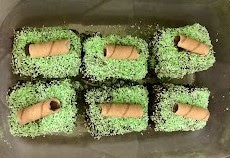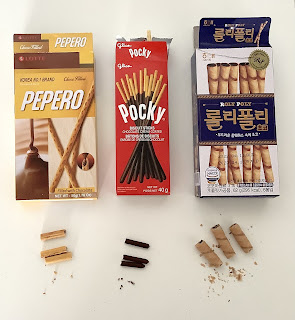Many strange stories have been recounted in the sitting room at 221B Baker Street. Few are stranger than the one brought by John Openshaw, who told of the morning his uncle received an envelope in the mail containing nothing but five dried orange seeds. Upon opening the envelope and seeing its mundane contents, Openshaw's uncle exclaimed, ‘My God, my God, my sins have overtaken me!’ and then quickly retired from the room stating that death had come upon him.
Imagine being that put out by the sight of a few orange pips! Surely there's no harm in such a thing. Indeed, some of the nicest people I know are Pips.
Dear Reader, I do hope that you are not a member of a murderous secret society. However, it may be that you need orange seeds one day for some lawful and virtuous purpose. In such a case, I'm sure you wouldn't want to waste the fruit just to get at the seeds. Here, therefore, is a cake that uses every part of the orange except the pips.
This cake uses five oranges five ways: the flesh is cut into juicy segments, the rind is candied for peel and zested to flavour cake batter and cream, the juice is used to make syrup, and the whole fruit is cooked for marmalade. Each component is prepared separately, and then the cake is assembled.
You can almost any kind of orange for this cake. Blood oranges would be cool, but Mrs. Hudson didn't think of that until she was halfway through the recipe. You'll want to use organic oranges, because you'll be eating the peel, and it's best to avoid the kind that have a very thick skin.
You will need 5 oranges, 3 cups sugar,
divided as below, 1 pint of
heavy cream and any ingredients
needed to make the two layer sponge cake recipe of your choice.
The Recipe
Candied Orange Peel and Syrup for Cake
Wash an orange. Slice off the top and bottom and score the peel in 4 sections so that it comes easily away from the fruit. Put the fruit part aside to use in syrup. Cut into strips or shapes. Boil peels for 15 minutes to soften them and get some of the bitterness out. Drain. Add 2 cups water and 2 cups sugar to the pot. Bring to a boil and simmer for about 45 minutes. The white pith should turn translucent and the peel should be fairly soft.
Remove peels from syrup and dry on drying rack until sticky. You can then roll some or all of them in granulated sugar for sparkle and crunch. Set aside. They'll keep for a while in an airtight container.
Do not discard the syrup in the pot. It should be quite thick now. Take the inside of the orange that you put aside when cutting the peels and use some of the juice from it to thin the syrup to a medium thickness. Set aside.
Orange Marmalade
Wash an orange and slice it thinly into whole rings. Put in a pot with 1.5 cups water and 1 cup sugar. Boil for about 30 minutes. The white orange rind should start to turn translucent. Take it off the heat and let it cool completely. Sprinkle a teaspoon of pectin or melatin into the pot and stir (if the liquid has mostly boiled off you can add a little more water or orange juice), then put back on the boil for about 10 minutes. Refrigerate. It should set loosely. Note that this kind of marmalade will only keep a day or two. It doesn't last like the standard jarred kind. Set aside.
Orange Supremes
Supremes is a fancy name for citrus segments that have the skin and pith removed. Cut around an orange removing both the peel and the skin of the orange to reveal the bare fruit. Then cut each segment away from the rest of the skin. Break into bite-sized pieces. Set aside.
Cake
We've used three oranges so far. Zest the fourth. Prepare a two layer vanilla sponge cake using any recipe you like, adding the zest to it. If your recipe calls for water or milk, replace all or some of the liquid with juice from this orange.
Whipped Cream
One orange left. Zest it finely and add this to a pint of heavy cream. Eat the rest of the orange. You've earned it. Whip cream and zest to stiff peak stage.
Assembly
Gather all the components—cakes, whipped cream, orange supremes, marmalade slices and candied peel.
Put one layer of the cake on a cake board or serving plate. Brush some of the syrup over it. You can poke a few wholes in the cake with a fork first so that it soaks in more, but don't add so much syrup that it gets soggy.
Spread whipped cream over the top and sprinkle orange supremes liberally over the cream.
Add second layer of cake. Cover it with whipped cream. Arrange some of the marmalade circles on top. Pipe the remaining whipped cream in swirls around the marmalade center and stick some of the candied peel into the swirls.
See first photo for the completed cake. This is just one suggestion for a decorative top. You may come up with something better!















